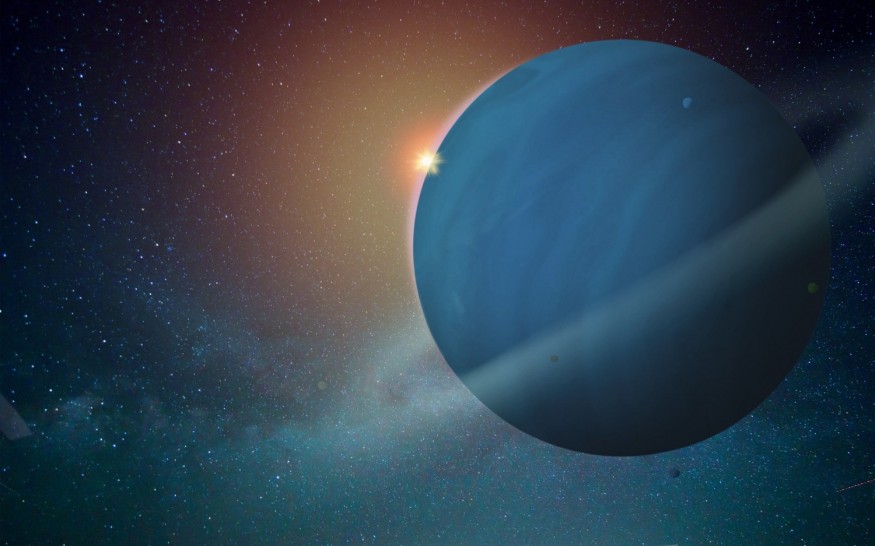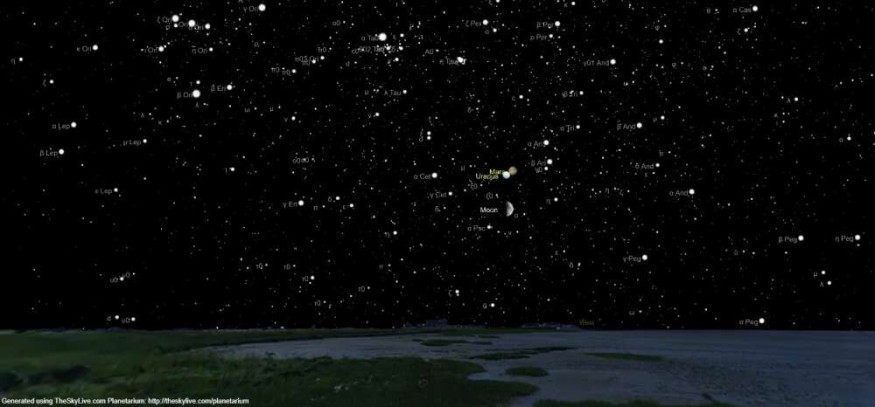Astronomy and astrology enthusiasts are in for a great time this week! A waxing Moon mixed with a significantly bright Mars will help you to quickly locate Uranus. Enthusiasts do not even need expensive, high graded specialized telescopes for this cosmological event. All you need is a pair of binoculars or a regular telescope.

There are even regions that are lucky enough to no longer need optical apparatus. In places with especially darker skies, there are chances that Uranus can be seen with just the naked eye.
Cosmic Event
From the 19th until January 21, the planets Mars and Uranus will be in conjunction with each other.
The phenomena mean that the planets' apparent cosmological position in the sky will be extremely close to each other. The Moon will be in its first-quarter phase on January 20, so bright but not too bright to outglare the planet.
Uranus will be 1.75 degrees south of Mars on January 21, which will be exceptionally bright and visible above the Moon.

If you want to witness the cosmic event, you can easily do so by going out after dark and immediately locating the Moon. Chances are, just a little bit above Earth's natural satellite is a bright red celestial body, that is, Mars.
If you focus your attention a tad bit on the lower left, there is where Uranus can be found.
The Moon is scheduled to set at midnight, meaning those who wanted to witness does not need to stay up extremely late just to see the celestial event.
For most people, without the aid of an optical instrument, it would be quite tricky to catch a glimpse of Uranus. It comes down to apparent magnitude, a calibrated value for how bright things appear in the sky.
It's estimated that someone with perfect vision somewhere with a dark sky in the middle of the night will be able to see stars with a magnitude of +6.5. Any value higher would be too dim for our eyes, even under the best possible circumstances.
Position
Uranus is currently at +5.7 magnitude, definitely on the visible side of the average human vision's magnitude limit.
Unfortunately, not everyone is lucky enough to be in an optimal area where the conditions are just right to spot the planet. However, with some basic spotting instruments like binoculars or telescopes, it would be feasible.
Uranus is significantly dimmer when compared to Mars. The third planet from the sun is way brighter, around 150 times brighter.
Missed the Chance to Witness
If you somehow missed the opportunity to witness the conjunction over the given period, it would still be possible to spot the two planets near each other for several more weeks.
But, by then, it would be relatively harder. That is because the Moon's bright shine would no longer guide the people towards Uranus.
Missing the conjunction would definitely suck because it's not every day that we get to experience such cosmic phenomena in just the right conditions.
Fortunately, it would not be the last conjunction of the year as 2021 is scheduled to get a great number of astronomical events coming.
For more Cosmic news, don't forget to follow nature World News!
© 2026 NatureWorldNews.com All rights reserved. Do not reproduce without permission.





